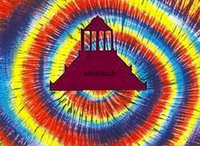It’s time for the U.S. to join the rest of the world and go fully metric
- Metric Tags:
Advantages obvious
In 1790, Thomas Jefferson advocated the adoption of the metric system. The U.S. Congress voted down the proposal by only one vote.
Sixty-five years later, Congress did legalize the voluntary use of the metric system, and it is now used in science, medicine and some sports.
France adopted the metric system as law back in 1840. America continues to drag its tail in adopting this superior measurement system of science. The metric system is used today by every major country in the world, except Liberia, Burma and the U.S.
Back in 1965, Great Britain became the first English speaking country to begin an organized effort to abandon the old-fashioned measurement system.
Canada, Australia and New Zealand quickly followed suit. The U.S., 43 years later, still refuses to join the modern world.
In 1971, the U.S. Secretary of Commerce recommended a 10-year voluntary plan. That came to naught.
In 1975 President Ford signed the Metric Conversion Act, but did not specify a schedule. Not wanting America to suffer from change, we decided to chop off our old measurement system, one piece at a time.
Hodge-podge system
Today we have a hodge-podge of some metric mixed in with our standard system. Our driving speed is measured in miles per hour, but every speedometer is also marked in kilometers (60 miles per hour equals about 100 kilometers per hour).
Digital gauges measure our temperature in Fahrenheit, or you can switch to Celsius. We buy soda pop by the liter, but milk by the gallon.
We play football by the yard, but run races by the meter. Repairing our cars often requires both standard and metric wrenches.
The metric system simplifies measurements by using multiples of 10. A decimeter is a tenth of a meter. A kilometer is 1,000 meters long. A gigabyte has 1,000 times more bytes of information than a megabyte.
In metric, the freezing point of water (at sea level) is zero Celsius, and the boiling point of water is 100 Celsius. The speed of light is 300,000 kilometers per second.
Bush has not been a good supporter of science, but he could still have a worthwhile legacy if he urged Congress to complete our conversion to the metric system. Americans are capable of doing this —other modern nations did it decades ago.
Contact the president (www.whitehouse.gov/co ntact/). Tell him to stop this insanity of dragging our tails in joining the modern world. Go metric!
source : http://www.citizen-times.com/apps/pbcs.dll/article?AID=200880726054
Calvin King is a retired minister and part-time writer/philosopher. He lives in Arden.
